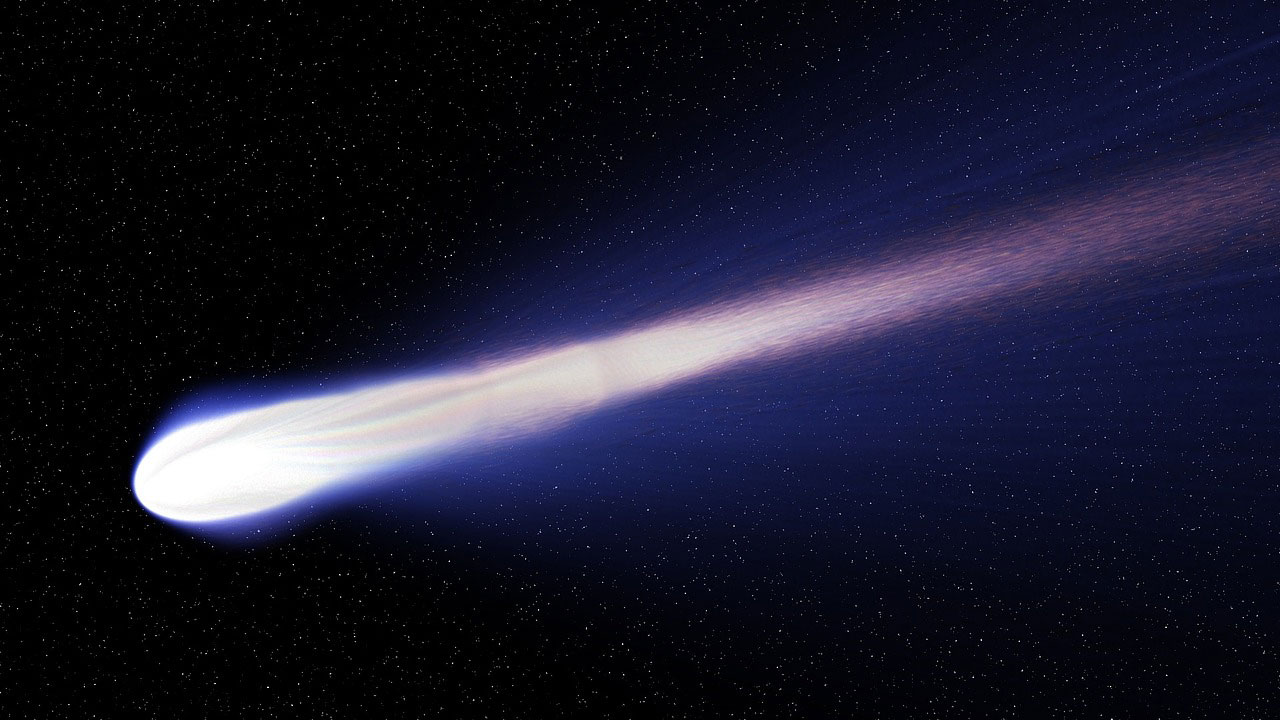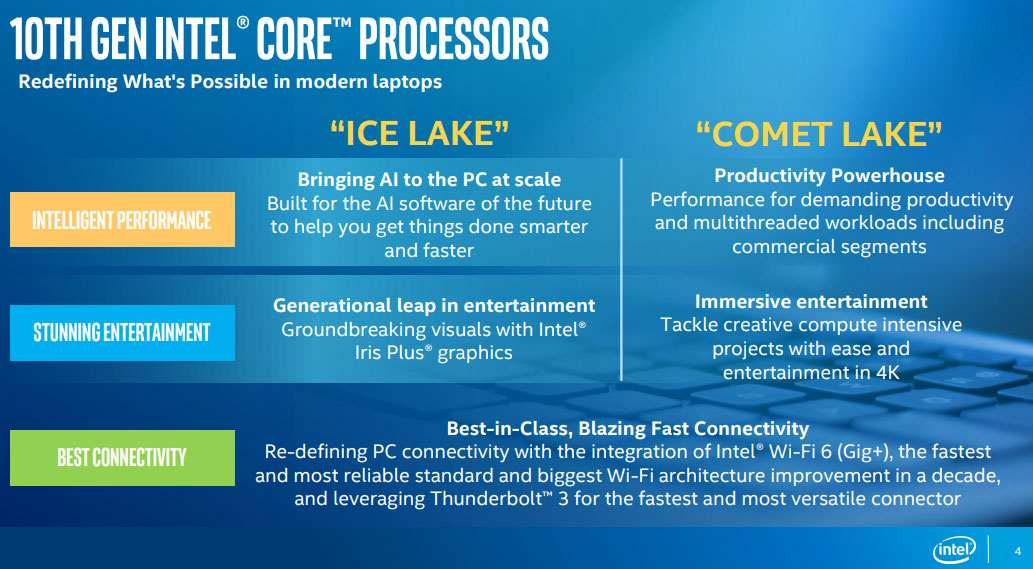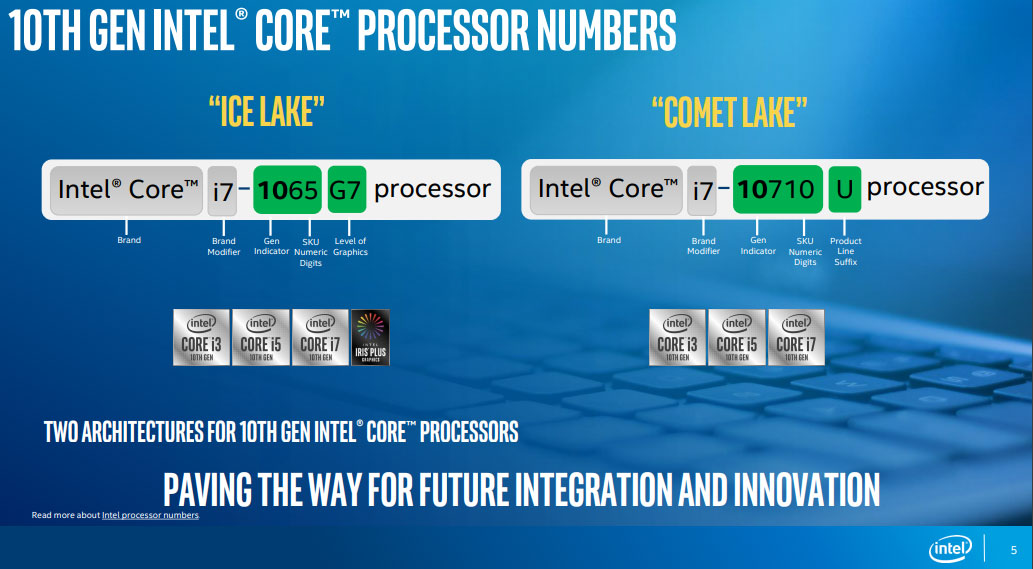Intel just bolstered its laptop CPU lineup with new 14nm Comet Lake processors
Comet Lake falls under the 10th-gen banner, just like 10nm Ice Lake (yes, it's confusing).
Intel is rolling out more 10th generation Core processors for laptops, though don't confuse these new CPUs for the company's recently launched 10-nanometer Ice Lake parts. Instead, these are Intel Comet Lake processors built on a 14-nanometer manufacturing process.
If you try to follow process nodes, codenames, and generational labeling, then things just got a bit confusing. Or maybe a lot confusing. Should you find yourself shopping for a laptop during the holiday season, you're bound to see models touting Whiskey Lake (8th gen), Ice Lake (10th gen), and Comet Lake (also 10th gen) processors.
Intel's Whiskey Lake lineup pretty much dominates the landscape right now, in terms of availability. The new Comet Lake parts are essentially an upgrade to Whiskey Lake with added features, such as support for Wi-Fi 6 (802.11ax) connectivity and faster LPDDR4x RAM.
There are eight new CPUs in all, split evenly between low-power Y-series (4.5-9W) and slightly higher-power U-series (15-25W) parts. Intel is offering Comet Lake in Core i3, i5, and i7 flavors, mostly in 4-core/8-thread configurations, though there is a single 6-core/12-thread model, the Core i7-10710U.
"The new 10th gen Intel Core processors leverage the improvements in intra-node optimizations on Intel’s highly optimized 14nm process technology that enable up to 16 percent overall performance gains and over 41 percent better productivity and multitasking on Microsoft Office 365 compared with the previous generation—all without compromising battery life," Intel says.
Base frequencies range from 1GHz to 2.1GHz, while single-core turbo clocks go all the way up to 4.9GHz on the Core i7-10510U. That SKU also has the fastest all-core turbo clock of 4.3GHz.
Specs across the board look just fine, but it's a little puzzling for Intel to inject 14nm CPUs into its mobile lineup less than a month after introducing 10nm models, and slapping the 10th gen banner on both. Intel's explanation is its 10nm Ice Lake parts is focused on bringing artificial intelligence capabilities to the PC at scale.
Keep up to date with the most important stories and the best deals, as picked by the PC Gamer team.
Intel's vice president of mobile platform marketing, Ron Senderovitz, explained things further in a recent briefing, according to PC World.
"One [Ice Lake] is for entertainment and for intelligent performance. The other one [Comet Lake] is for productivity," Senderovitz said. "And both of them are coming with the connectivity that we’ve talked to you [about], and with a baseline performance that is really fantastic."
Intel anticipated the confusion and included comparisons in an accompanying slide deck. Here's a look:
Intel also included a slide breaking down the different features and specifications between Ice Lake and Comet Lake:
It will be interesting to see how performance compares between Ice Lake and Comet Lake, as well as Whiskey Lake. As far as multi-threaded workloads go, Ice Lake does not currently have a 6-core/12-thread option like Comet Lake does.
Sorting through all these different 'Lakes' and process nodes is confusing enough, but what about the elongated model numbers? The final slide of interest serves as a handy cheat sheet:
The first two numerical digits (after the Core i7/i5/i3 branding) indicates the generation Intel is using, followed by the SKU and product line suffix. Except on Ice Lake, which reserves the last two characters for the level of graphics. Fun, right?
Laptop makers are already starting to announce new products based on Comet Lake. In addition, Intel is planning to launch more Comet Lake CPUs in the first half of next year.
Paul has been playing PC games and raking his knuckles on computer hardware since the Commodore 64. He does not have any tattoos, but thinks it would be cool to get one that reads LOAD"*",8,1. In his off time, he rides motorcycles and wrestles alligators (only one of those is true).







